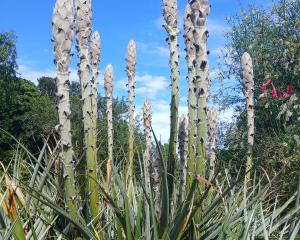
Is poroporo a weed? Not in any ecological sense as it’s a local native. It provides shelter for restoration plantings and attracts birds to eat ripe fruit. The birds then leave rich droppings which contain more native seeds, encouraging regeneration.
But let’s look at some of the specific pros and cons.
Pros
It’s a rongoa
Pounded and pulped leaves can be used to cool and relieve itchy skin or sores.
A chemical in poroporo (solasodine) has been used in contraceptive pills and anti-inflammatory drugs.
It’s quick growing and pops up all over the place
But you can prune it to make a tighter shrub. Try training it against a wall, or lift the lower branches to form a canopy, protecting tender plants beneath.
It’s kind of beautiful
Beauty is in the eye of the beholder.
Cons
It’s poisonous
Be careful! All green parts of the plant are highly toxic. But when the fruits are so ripe that they are orange, splitting and falling off the plant, they can be eaten — like its cousin, the tomato.
It’s quick growing and pops up all over the place
Poroporo thrives in disturbed ground, such as your garden.
It’s kind of ugly
It tends to sprawl and take up space.
Garden Life is produced by the Dunedin Botanic Garden. For further information contact Kate Caldwell.












